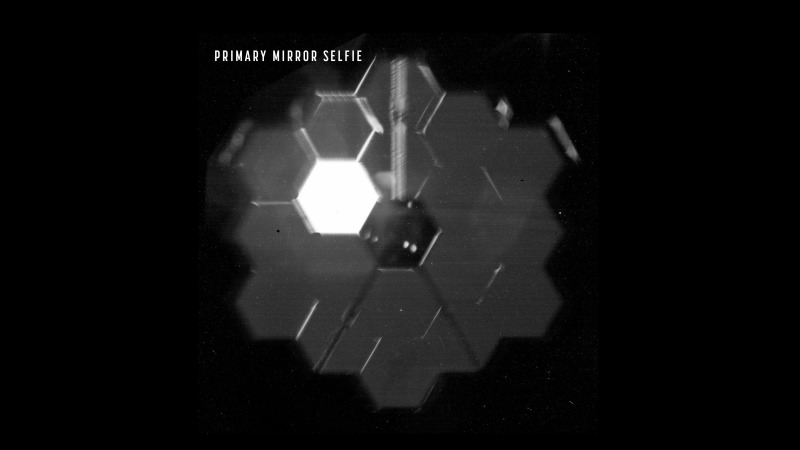'Holy cow!' How the James Webb Space Telescope took a selfie in space
A special lens shows the telescope getting ready for work in the coming months.

We've just seen the first up-close view of the James Webb Space Telescope hard at work in deep space.
A special lens within the telescope's near-infrared camera (NIRCam) instrument allowed engineers to take a look at Webb's mirror alignment and to generate a cool view of the telescope, all at the same time. Engineers now also have the assurance that NIRCam is successfully receiving light, which is crucial for its ultimate goal of helping to image objects in space.
"I think pretty much the reaction [to the selfie] was, 'Holy cow,' " Lee Feinberg, Webb optical telescope element manager at NASA Goddard Space Center, said of his team's reaction to the selfie during a media update about the spacecraft's first images Friday (Feb. 11).
Live updates: NASA's James Webb Space Telescope mission
Related: How the James Webb Space Telescope works in pictures
"Even when we tested in Houston, we didn't have starlight illuminating the primary mirror in this configuration. So this was actually a new thing for us," Feinberg said, clarifying that testing on Earth was performed with lighting diodes.
The new NIRCam view, he noted, "wowed the team, and that's one of the reasons I think people wanted to share it."
Bonus image! When it’s time to focus, sometimes you need to take a good look at yourself.This “selfie” taken by Webb of its primary mirror was not captured by an externally mounted engineering camera, but with a special lens within its NIRCam instrument. #UnfoldTheUniverse pic.twitter.com/XtzCdktrCAFebruary 11, 2022
NIRCam is capable of taking images of the 18 primary mirror segments, and it generated the selfie for engineering and alignment purposes, NASA said on its blog Friday (Feb. 11). The image shows a bright mirror segment pointing to a bright star, while the others are not yet aligned in that direction. Engineers are moving the mirrors into alignment for eventual science observations in a few months.
Get the Space.com Newsletter
Breaking space news, the latest updates on rocket launches, skywatching events and more!
"NIRCam will be used throughout nearly the entire alignment of the telescope's mirrors," NASA said of the alignment process. "It is, however, important to note that NIRCam is operating far above its ideal temperature while capturing these initial engineering images, and visual artifacts can be seen in the mosaic."
As Webb continues to cool, the "artifacts" will lessen and the telescope will be better primed to do its work, NASA added. The telescope is designed to work in infrared (heat-seeking) wavelengths and thus needs to be quite cool to accomplish this work.
Webb's position at a Lagrange point keeps it far away from the heat of the sun and the Earth, and a sunshield prevents light from falling accidentally on the telescope's instruments or optics.
Follow Elizabeth Howell on Twitter @howellspace. Follow us on Twitter @Spacedotcom and on Facebook.
Join our Space Forums to keep talking space on the latest missions, night sky and more! And if you have a news tip, correction or comment, let us know at: community@space.com.

Elizabeth Howell (she/her), Ph.D., was a staff writer in the spaceflight channel between 2022 and 2024 specializing in Canadian space news. She was contributing writer for Space.com for 10 years from 2012 to 2024. Elizabeth's reporting includes multiple exclusives with the White House, leading world coverage about a lost-and-found space tomato on the International Space Station, witnessing five human spaceflight launches on two continents, flying parabolic, working inside a spacesuit, and participating in a simulated Mars mission. Her latest book, "Why Am I Taller?" (ECW Press, 2022) is co-written with astronaut Dave Williams.









